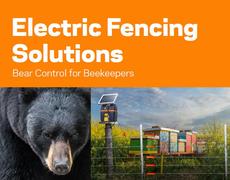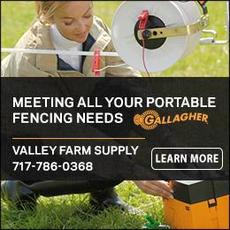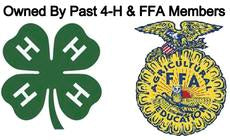Deep cycle batteries can be rated in either cold cranking amperes (amps) or amp hours. However, there are many types of deep cycle batteries. True deep cycles are never used for starting vehicles and thus have no cold cranking rating. A deep cycle battery should rarely, if ever, be discharged to less than 40 percent of full charge. To do so will damage the plates. So, a battery that is rated as 100 amp hours has only 60 usable amp hours. Sixty ampere hours is 60,000 milli-amperes. Most battery energizers will provide statistics regarding their draw per hour. It is usually given in milli-amperes. (Truly big ones use over 1,000 milli-amperes per hour). An energizer that draws 200 milli-amperes per hour will take 6,000 milli-amperes (24 hours x 200 milli-amperes) out of the battery in a 24-hour period. So, that 100 amp hours deep cycle battery should run the unit for 10 days ( 60,000 milli-amperes/6,000 milli-amperes per day). An 88B unit is an unusual energizer in terms of circuit design and function. Though only a 5.5 joule unit, even at low setting, the joules that it actually delivers to the point of animal contact greatly exceeds that of much larger units when the total fence circuit resistance is high. However, its voltage is usually10-15% lower than many others. This is a direct result of the unusual circuit design. It is my estimation that, even at low setting, this unit has about five times more energizer energy output available than is needed in most instances. That is always better than the opposite situation, however. A word on the subject of voltage for electric fences. Few things seem to be so misunderstood by so many. It is not the voltage that deters an animal. If it were, static electricity would be a terrible thing, as the voltage contained in it often exceeds 15,000 volts (not a misprint). But the energy available in static electricity is minute. Thus only minute pain is felt. It is the actual quantity (joules) of energy that passes through the animal. The energy that flows is not proportionate to the voltage of a circuit. However, a minimum level of voltage is required to overcome the resistance of the animal/fence wire/soil, etc. Without adequate voltage, no energy will flow. An example of this is a 12 volt battery. If a human or animal touches both terminals of a battery, no pain is felt, yet so much energy is available that if one instead lays a metal screwdriver across the terminals, sparks will fly, the metal will become red hot and even melt. Why the difference between human flesh and metal? The metal has very low resistance ( in ohms). Therefore 12 volts are enough to "open the door" for energy to flow from one terminal to another. Compared to most metals, animal flesh has high resistances, so high that much higher voltage than 12-15 volts is needed to allow energy to flow. Thus, when we touch a battery's terminals, no energy flows.Thus no pain is felt. An electric fence circuit is between a battery and static electricity. It has higher voltage than the battery, yet usually less than static electricity. It has much higher energy potentials than static electricity yet less than that from a battery (which offers a constant flow, not in pulses). It has been stated that 3,000 volts is needed for sheep, 2,000 for cattle or variations on this theme. Such statements need to be read with much more understanding than is usually provided. The same sheep fence in my area in the early morning in June may read only 1,000 volts at 7 a.m. and 3,000 plus volts at 5 p.m. At both times, the fence is probably delivering effective energy and voltage to an animal. At 7 a.m.in late June many of the wires will be touching dew-laden grass. Thus the voltage is reduced by the leakage through the set grass and weeds. But the feet and nose of both sheep and sheep predators are also wet at this time so their total resistance is also reduced. Less voltage is needed to "open the door" for energy to pass through the animal. One thousand volts may be enough for this situation. In fact, 600 volts may be enough (Remember, that animals have been killed by 220 volt circuits when touching alternating current, so, we know that 220 volts are enough to "open the door" to the passage of energy through flesh in optimum conditions.) At 5 p.m. the grass is dry, and so are the animals' hooves and hair. Thus the animals' resistance to electrical flow has increased considerably, and more voltage is needed to open the door for energy to flow. Two thousand volts may indeed be needed to "open the door" for energy flow in this situation. Energizers also vary. Some deliver higher energy levels at lower voltages to an animal than other energizers. So the guidelines are just that - guidelines, but not scripture. So, when you read voltage, the total situation must be taken into account before concluding which is good versus not good. One needs to take several readings in order to observe a trend, and the readings are not always transferrable between energizers. Animals react differently to an electrical shock. The work that I have seen and the experts that I have discussed this with indicate that the difference is not intelligence, but that canines, for example, received a much higher actual shock (in joules) if they touch the same fence at the same spot as your lambs. How can this be? Remember that a canine has bare pads on the ground and a bare, usually wet nose. Thus his skin/flesh/foot resistance is lower (less ohms) than the lamb--which has hard hooves and usually drier head contact surfaces. Thus the lamb's resistance may be 1,000 ohms and the dogs only 250. That means the dog receives a much great percent of the delivered energy than the lamb. The same effect can be observed by humans touching the same fence in bare feet versus in shoes. This trial (not advised by the way) must be done at the same time to the very same contact point for it to be relevant. The shoes increase the total resistance a great deal and thus decrease the actual joules delivered. |








